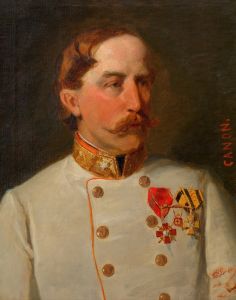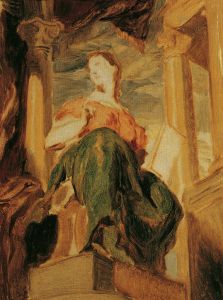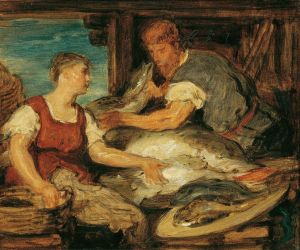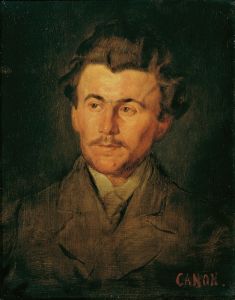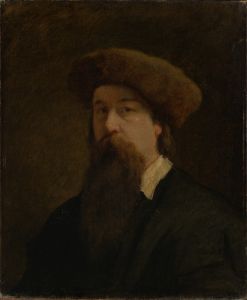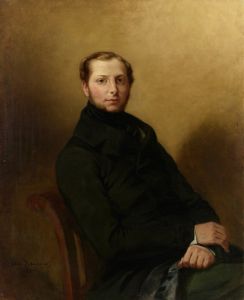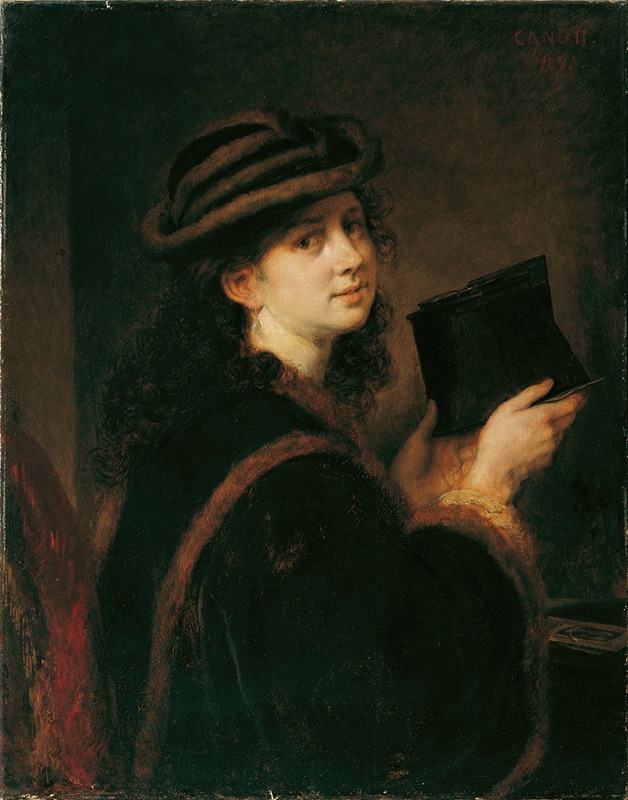
Mädchen mit Stereoskop
A hand-painted replica of Hans Canon’s masterpiece Mädchen mit Stereoskop, meticulously crafted by professional artists to capture the true essence of the original. Each piece is created with museum-quality canvas and rare mineral pigments, carefully painted by experienced artists with delicate brushstrokes and rich, layered colors to perfectly recreate the texture of the original artwork. Unlike machine-printed reproductions, this hand-painted version brings the painting to life, infused with the artist’s emotions and skill in every stroke. Whether for personal collection or home decoration, it instantly elevates the artistic atmosphere of any space.
Hans Canon, an Austrian painter known for his historical and genre scenes, created the painting "Mädchen mit Stereoskop" (translated as "Girl with a Stereoscope"). This artwork reflects Canon's interest in capturing the nuances of everyday life and the technological advancements of his time. Born in 1829 in Vienna, Canon was part of the 19th-century European art scene, which was characterized by a fascination with realism and the exploration of new themes and subjects.
"Mädchen mit Stereoskop" is a notable example of Canon's ability to blend traditional painting techniques with contemporary subjects. The painting depicts a young girl engaged with a stereoscope, a device that was popular in the 19th century for viewing stereoscopic images, which created a three-dimensional effect. This device was a significant technological innovation of the time, allowing people to experience images in a more immersive way. By incorporating the stereoscope into his painting, Canon not only captured a moment of leisure and curiosity but also highlighted the intersection of art and technology.
The composition of "Mädchen mit Stereoskop" is carefully arranged to draw the viewer's attention to the girl's focused expression as she peers into the stereoscope. Canon's use of light and shadow enhances the realism of the scene, a hallmark of his painting style. The attention to detail in the girl's attire and the surrounding environment reflects Canon's commitment to realism and his skill in rendering textures and materials.
Hans Canon's work, including "Mädchen mit Stereoskop," is often associated with the broader movements of realism and genre painting that were prevalent in 19th-century Europe. These movements sought to depict everyday life and ordinary people with honesty and precision, moving away from the idealized subjects of earlier art periods. Canon's paintings are characterized by their narrative quality and the ability to capture the essence of a moment, making them valuable records of the cultural and social dynamics of his time.
While "Mädchen mit Stereoskop" is not as widely known as some of Canon's other works, it remains an important piece within his oeuvre for its depiction of contemporary life and its subtle commentary on the impact of technological advancements on society. Canon's ability to integrate these themes into his art demonstrates his keen observation skills and his interest in the changing world around him.
Hans Canon continued to produce art until his death in 1885, leaving behind a legacy of works that offer insight into the 19th-century European experience. His paintings, including "Mädchen mit Stereoskop," continue to be appreciated for their technical skill and their ability to convey the spirit of their time.










